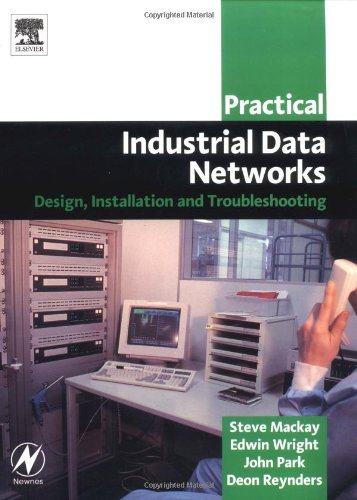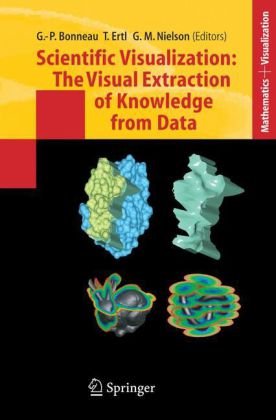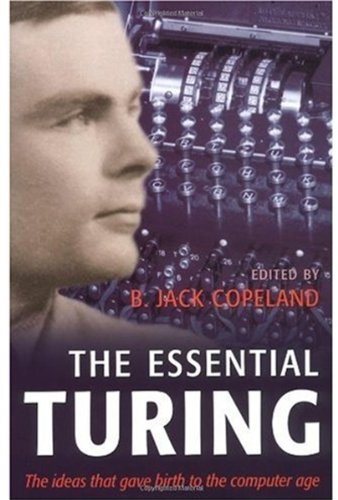Steve Mackay CPEng BSc (ElecEng) BSc (Hons) MBA, Edwin Wright MIPENZ BSc (Hons) BSc (Elec Eng), Deon Reynders Pr Eng BSc (ElecEng) (Hons) MBA, John Park ASD9780750658072, 07506-5807X
Table of contents :
Team DDU……Page 1
Contents……Page 6
Preface……Page 14
1.1 Introduction……Page 18
1.2 Modern instrumentation and control systems……Page 19
1.3 Open systems interconnection (OSI) model……Page 23
1.4 Protocols……Page 24
1.5 Standards……Page 25
2.2 Common problems and solutions……Page 34
2.3 General comments on troubleshooting……Page 35
2.4 A specific methodology……Page 36
2.5.2 Electrical coupling of noise……Page 37
2.5.3 Shielding……Page 42
2.5.5 Cable spacing……Page 44
2.5.6 Earthing and grounding requirements……Page 45
2.5.7 Suppression techniques……Page 46
2.5.8 Filtering……Page 47
3.1 EIA-232 interface standard (CCITT V.24 interface standard)……Page 49
3.1.1 The major elements of EIA-232……Page 50
3.2 Half-duplex operation of the EIA-232 interface……Page 57
3.3 Summary of EIA/TIA-232 revisions……Page 58
3.5.1 Introduction……Page 59
3.5.2 Typical approach……Page 60
3.5.3 Test equipment……Page 61
3.5.4 Typical EIA-232 problems……Page 64
3.5.5 Summary of troubleshooting……Page 68
4.1 The EIA-485 interface standard……Page 70
4.2.1 Introduction……Page 75
4.2.2 EIA-485 vs EIA-422……Page 76
4.2.3 EIA-485 installation……Page 77
4.2.4 Noise problems……Page 78
4.2.5 Test equipment……Page 82
4.2.6 Summary……Page 85
5.1 The 20 mA current loop……Page 86
5.2 Serial interface converters……Page 87
5.3.1 Troubleshooting converters……Page 89
6.1 Introduction……Page 91
6.2 Fiber optic cable components……Page 92
6.3 Fiber optic cable parameters……Page 94
6.4 Types of optical fiber……Page 95
6.5.1 Aerial cable……Page 97
6.5.4 Indoor cables……Page 98
6.6.2 Splicing fibers……Page 99
6.6.3 Connectors……Page 100
6.7 Splicing trays/organizers and termination cabinets……Page 101
6.7.2 Splicing enclosures……Page 102
6.7.3 Termination in patch panels and distribution frames……Page 103
6.8.2 Standard troubleshooting approach……Page 105
6.8.4 Fiber installation rules……Page 106
6.8.6 Locating broken fibers……Page 108
7.1 General overview……Page 113
7.2 Modbus protocol structure……Page 114
7.3 Function codes……Page 115
7.3.2 Read digital input status (function code 02)……Page 116
7.3.3 Read holding registers (function code 03)……Page 117
7.3.4 Reading input registers (function code 04)……Page 118
7.3.5 Force single coil (function code 05)……Page 119
7.3.6 Preset single register (function code 06)……Page 120
7.3.7 Read exception status (function code 07)……Page 121
7.3.8 Loopback test (function code 08)……Page 122
7.3.9 Force multiple coils or digital outputs (function code 0F)……Page 123
7.3.10 Force multiple registers (function code 10)……Page 124
7.4.2 Description of tools used……Page 126
7.4.3 Detailed troubleshooting……Page 127
7.4.4 Conclusion……Page 131
8.1 General overview……Page 132
8.2.1 Common problems and faults……Page 135
8.2.3 Detailed troubleshooting……Page 136
8.2.4 Conclusion……Page 140
9.1.1 Overview of Allen Bradley protocol……Page 142
9.1.3 Full-duplex data link layer……Page 143
9.2.2 Data Highway Plus wiring troubleshooting……Page 151
9.2.3 Data Highway Plus network diagnostics……Page 153
10.1 Introduction to HART and smart instrumentation……Page 154
10.2 HART protocol……Page 155
10.3 Physical layer……Page 156
10.4 Data link layer……Page 158
10.5 Application layer……Page 159
10.6 Troubleshooting……Page 161
11.1 Introduction……Page 162
11.2 Layer 1 – the physical layer……Page 163
11.3 Layer 2 – the data link layer……Page 166
11.5.1 Introduction……Page 169
11.5.2 Tools of the trade……Page 170
12.1 Introduction……Page 172
12.2.1 Topology……Page 173
12.3 Connectors……Page 174
12.3.2 Hardwired (unsealed) connection……Page 175
12.3.3 Mini (sealed) connector……Page 176
12.4 Cable budgets……Page 177
12.5.1 Sealed taps……Page 178
12.5.3 Open style taps……Page 179
12.5.4 Multiport open taps……Page 180
12.5.5 Power taps……Page 181
12.6.2 Thin cable specification……Page 182
12.6.3 Flat cable……Page 183
12.7.1 General approach……Page 184
12.7.3 Single supply – center connected……Page 185
12.9 Signaling……Page 187
12.10.1 Frame format……Page 188
12.10.2 Medium access……Page 189
12.10.3 Fragmentation……Page 190
12.12.2 Tools of the trade……Page 191
12.12.3 Fault finding procedures……Page 194
13.1 Introduction……Page 198
13.2.1 Physical layer (layer 1)……Page 200
13.2.2 Data link layer (layer 2)……Page 201
13.2.4 Fieldbus message specification (FMS)……Page 204
13.2.5 Lower layer interface (LLI)……Page 205
13.2.6 Fieldbus management layer (FMA 7)……Page 206
13.4 Relationship between application process and communication……Page 207
13.5 Communication objects……Page 208
13.7.1 Configuration……Page 209
13.7.3 Synchronization and freeze modes……Page 211
13.8.2 Troubleshooting tools……Page 212
13.8.3 Tips……Page 215
14.1 Introduction to Foundation Fieldbus……Page 217
14.2 The physical layer and wiring rules……Page 218
14.3 The data link layer……Page 221
14.4 The application layer……Page 222
14.5 The user layer……Page 223
14.7 High-speed Ethernet (HSE)……Page 224
14.8.2 Installation of the complete system……Page 225
14.9.1 Introduction……Page 227
14.9.2 Power problems……Page 228
14.9.3 Communication problems……Page 229
14.9.4 Foundation Fieldbus test equipment……Page 232
15.1 Introduction……Page 233
15.2.1 Media systems……Page 234
15.2.4 Frame transmission……Page 240
15.2.6 MAC frame format……Page 241
15.2.7 IEEE 802.2 LLC……Page 243
15.2.9 Design rules……Page 244
15.3.1 Introduction……Page 247
15.3.3 Auto-negotiation……Page 248
15.4.1 Introduction……Page 250
15.4.3 Gigabit Ethernet design considerations……Page 251
15.5.2 Connectors and cabling……Page 253
15.5.5 Noise and interference……Page 254
15.5.7 Switching technology……Page 255
15.5.9 Fast and gigabit Ethernet……Page 256
15.5.11 Industrial Ethernet architectures for high availability……Page 257
15.6.3 Tools of the trade……Page 258
15.6.4 Problems and solutions……Page 260
15.6.5 Troubleshooting switched networks……Page 272
15.6.7 Troubleshooting gigabit Ethernet……Page 273
16.1 Introduction……Page 274
16.2.1 IP version 4 (IPv4)……Page 276
16.2.2 Address resolution protocol (ARP)……Page 279
16.2.4 ICMP datagrams……Page 282
16.2.5 Routing……Page 284
16.3.1 TCP……Page 287
16.3.2 UDP……Page 288
16.4.3 Tools of the trade……Page 289
16.4.4 Typical network layer problems……Page 290
16.4.5 Transport layer problems……Page 292
17.1 Introduction……Page 294
17.2 Components of a radio link……Page 295
17.3 The radio spectrum and frequency allocation……Page 296
17.4 Summary of radio characteristics of VHF/UHF……Page 298
17.5 Radio modems……Page 299
17.5.1 Modes of radio modems……Page 302
17.5.2 Features of a radio modem……Page 303
17.6.1 Introduction……Page 304
17.6.2 Intermodulation……Page 305
17.7.1 Path profile……Page 306
17.7.2 RF path loss calculations……Page 309
17.7.3 Transmitter power/receiver sensitivity……Page 310
17.7.4 Signal to noise ratio and SINAD……Page 311
17.7.5 Fade margin……Page 312
17.7.7 Miscellaneous considerations……Page 313
17.8 Troubleshooting……Page 314
Appendix A Glossary……Page 315
Appendix B Basic terminology……Page 333
Appendix C Practicals……Page 360
Appendix D Miscellaneous industrial protocols overview……Page 419
Appendix E Local services, regulations and standards……Page 423
Index……Page 432







Reviews
There are no reviews yet.